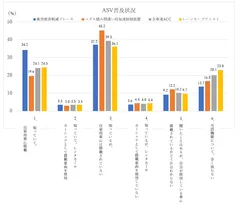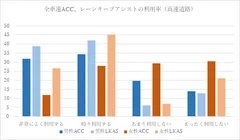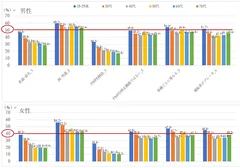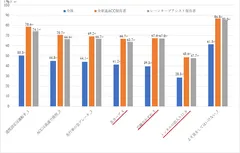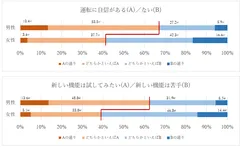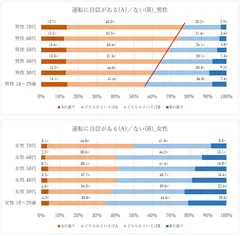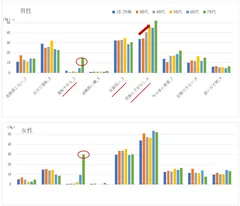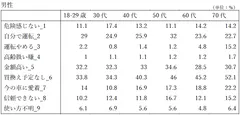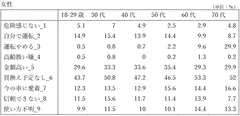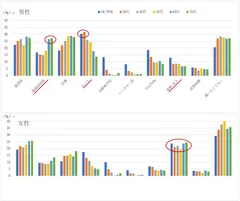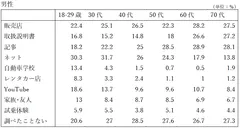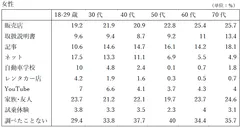Survey on Understanding and Driving Awareness of Advanced Safety Technologies in Vehicles Results of the 2023 Survey on ASV Functions (Ministry of Land, Infrastructure, Transport and Tourism)
Even "automatic braking" requires the driver to step on the brake - More than half of the respondents do not know Men are more confident in driving as their age increases Functional limits that even those who use ACC and Lane Keep Assist do not know Older men are more instruction manual oriented, women are more word-of-mouth oriented
SC-ABeam Automotive Consulting
SC-ABeam Automotive Consulting (headquartered in Tokyo) has been commissioned by the Ministry of Land, Infrastructure, Transport and Tourism (MLIT) to conduct public awareness activities under the 7th ASV Promotion Plan*. As part of these activities, we analyzed the results of the "FY2023 Survey on ASV Functions" conducted by the Ministry of Land, Infrastructure, Transport and Tourism, and clarified the characteristics of the level of understanding of ASV functions.
ASV = Advanced Safety Vehicle
<Abstract
The spread of ASV functions - ASVs are becoming more widespread.
The number of respondents who have installed collision damage reduction brakes in their private cars is one-third of the total, while the number of those who have installed all-speed ACC (Adaptive Cruise Control: a distance control system) or lane keeping assist is one-fourth, indicating that ASVs are becoming more widely used.
Usage status -Men are active users, while women are passive users
Of those who have all-speed ACC or Lane Keeping Assist in their cars, the actual usage rate differs between men and women, with men actively using them, while women are particularly reluctant to use all-speed ACC.
■Functional understanding - Even with "automatic braking," drivers brake and ACC functional limitations - Many do not know about it.
-Fewer than half of all respondents knew that "both functions require the driver to step on the brake by himself/herself immediately after the warning sounds" for collision damage reduction braking and acceleration control at the time of pedal misstep. Women in particular were 10 points lower than men.
-Almost 90% of those who know that the All-speed ACC and Lane Keep Assist functions "are not 'automatic driving' and that the driver is responsible for driving and should not look away" know that these functions "are not 'automatic driving' and the driver is responsible for driving, so he/she should not look away," while nearly 90% of those who have these functions in their own cars know that they are activated at tunnel exits and sharp curves, and that they can be activated only when the driver cannot respond to the warning. However, the percentage of those who know about specific functional limitations, such as the fact that the function may not work or respond at tunnel exits or sharp curves, is low.
Driving type by gender and age: Older men are more confident in driving, while women are not so good at new functions
-Men are more confident in driving, and the older the age group, the higher the percentage of confident drivers. Men are more likely to be willing to try new functions, while women are more likely to be uncomfortable with new functions.
-People who are not confident in their driving are less likely to intend to switch to a car equipped with ASV.
Reasons for not switching to ASV-equipped vehicles: No. 1 is "no plans to replace" and No. 2 is "high price
-The most common reason for not switching to a vehicle equipped with ASV is "I don't plan to replace it," especially among males, with the rate increasing with age. For both men and women, many respondents in their 70s chose "because I will stop driving soon. The second most common reason overall was "the price is too expensive.
Sources of Information on Advanced Safety Functions: Trisets for Older Men, Word of Mouth for Women
-While many men in their 60s and 70s read user manuals, younger generations gather information from the Internet. Many women, across all age groups, use word-of-mouth as their source of information: "family/friends.
<Findings
ASV functions have expanded significantly in recent years, with collision damage reduction brakes now mandatory on all new models, and all-speed ACC being used in minicars as well. However, the survey also revealed that some respondents are not using these functions because they are not familiar with new functions, or they are overconfident because they do not understand the functions well. The survey results also show that the level of understanding of each function and awareness of driving differs depending on age and gender.
In future communication to promote ASVs, it is important to convey the benefits and functional limitations in an easy-to-understand manner. In addition, taking into account the differences in understanding and awareness, it is considered effective to tailor the communication to the target group. the website on ASV/ADAS, "Drive Safe!" (see URL: https://drivesafe.jp/).
*The Seventh ASV Promotion Plan sets forth the theme of "Thorough and effective strategies for the correct understanding and use of ASVs, which have become a technology used by everyone, and for their effective dissemination,
1. accident prevention through correct use of ASV technology that is currently not effectively utilized
2. accident prevention due to incorrect understanding and use of functions (accident prevention due to overconfidence and misunderstanding)
(2) Prevention of accidents due to incorrect understanding and use of functions (prevention of accidents due to overconfidence and misunderstanding)
<Outline of the Survey
Objective
As part of the activities of the Ministry of Land, Infrastructure, Transport and Tourism's ASV Promotion Plan, a survey was conducted to determine the ownership and use of ASVs (Advanced Safety Vehicles) and the level of understanding of their functions.
Survey period: February 9-16, 2024
Survey targets: 10,000 men and women with driver's licenses nationwide
Areas: Hokkaido/Tohoku / Kanto / Chubu / Kinki / Chugoku / Shikoku / Kyushu/Okinawa
Gender: 18-79 years old, male and female
Area (7 categories) x (2 categories by sex) x (6 categories by age) = 84 equally distributed and collected
Survey Method: Internet research using Rakuten Insight survey monitors
Survey Items:
- ASV functionality of the surveyed respondents:
- Ownership and use of each ASV function surveyed
- Understanding of the details of each ASV function surveyed
- Driving awareness (confidence, interest in new features, etc.)
- Methods of obtaining information on vehicle functions
<Report Excerpts
■Prevalence of ASVs - ASVs are becoming more widely used.
1/3 of all respondents have collision damage reduction brakes installed in their own cars, and 1/4 have All-speed ACC or Lane Keeping Assist, indicating that the use of ASVs is spreading.
Q: Please answer the following questions regarding collision damage reduction brakes, acceleration control system for pedal misstep, All-speed ACC, and Lane Keeping Assist, as they apply to you.
1_Yes, and my current private car is equipped with these functions.
2_Yes, and my rental or car-sharing vehicle is equipped with these functions.
3_Yes, but my current car is not equipped with this function.
4_Yes, but the car I rent or share is not equipped with this function.
5_You have heard of the function, but you do not know whether your car is equipped with the function or not.
6_I have never heard of this function.
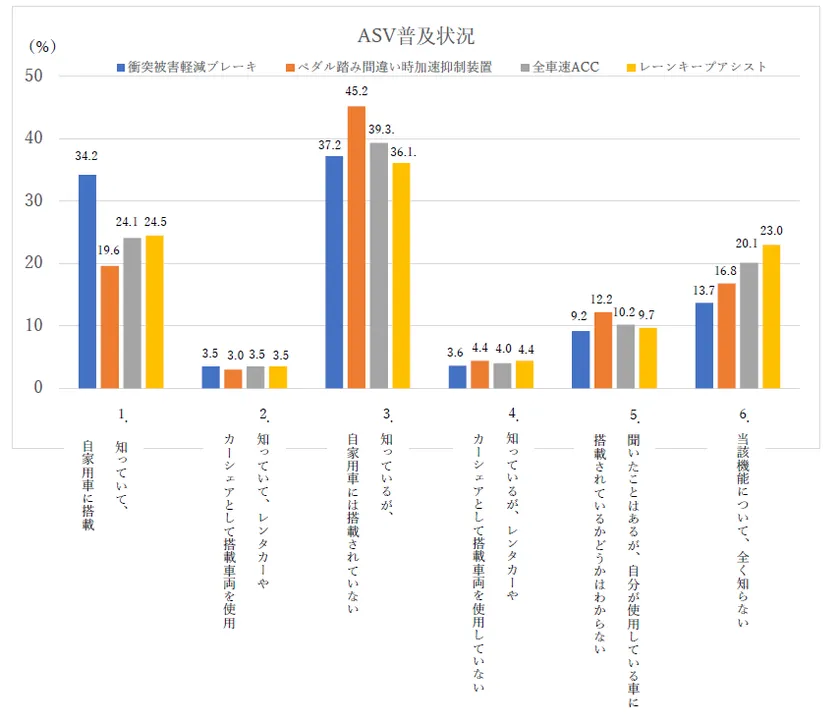
Chart 1
Usage of ACC in private cars: Men are active users, women are passive users
Among those who have All-speed ACC or Lane Keeping Assist in their own cars, the usage rates differ between men and women, with men actively using these functions, while women are particularly reluctant to use All-speed ACC.
Question: (Questions for those who have All-speed ACC and Lane Keeping Assist functions) Do you use those functions on expressways, freeways, and public roads respectively?
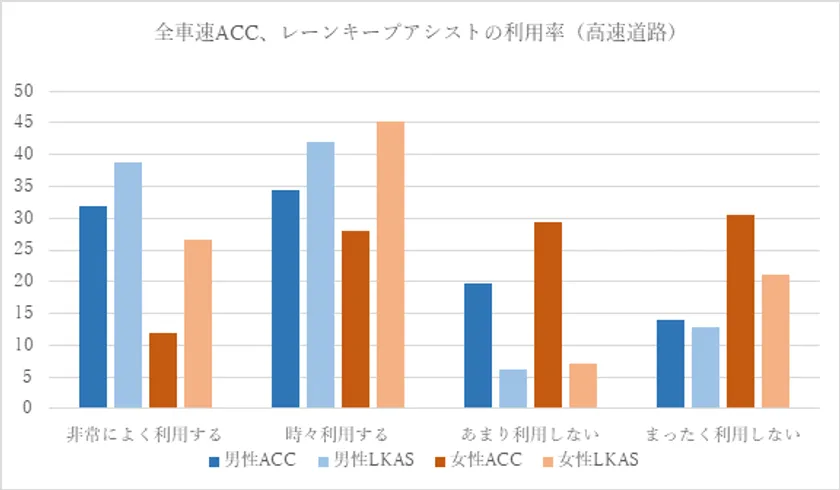
Chart 2
■ Level of understanding of functions - Less than half of drivers step on the brake even with "automatic braking
Fewer than half of all respondents knew that "both of these functions require the driver to step on the brake immediately after a warning sounds" when using the collision damage reduction brake or the acceleration control system when stepping on the wrong pedal. Women in particular were 10 points lower than men.
As for understanding of the functions of ACC and Lane Keep Assist, nearly 90% of those who have these functions in their own cars know that "both functions are not 'automatic driving' and that the driver must not look away because he/she is responsible for driving" but that they cannot be activated or responded to at tunnel exits or sharp curves. However, the percentage of those who know about specific functional limitations, such as the fact that they may not be able to operate or respond at tunnel exits or on sharp curves, is lower.
Q: To what extent are you familiar with the functions of collision damage reduction brakes and acceleration suppression systems for wrong-pedal missteps?
1_Collision damage reduction brakes may not detect obstacles at night or in backlit conditions.
2. Even if the collision damage reduction brake system is working properly, accidents may not be avoided depending on driving conditions such as rain or snowy roads.
3. Acceleration Mitigation Device (PMPD) is deactivated when the driver continues to depress the accelerator pedal.
4. PMPD does not stop the car.
5. Both functions vary in performance and conditions of operation depending on the car model.
6. Both functions require the driver to step on the brake immediately after the warning sounds.
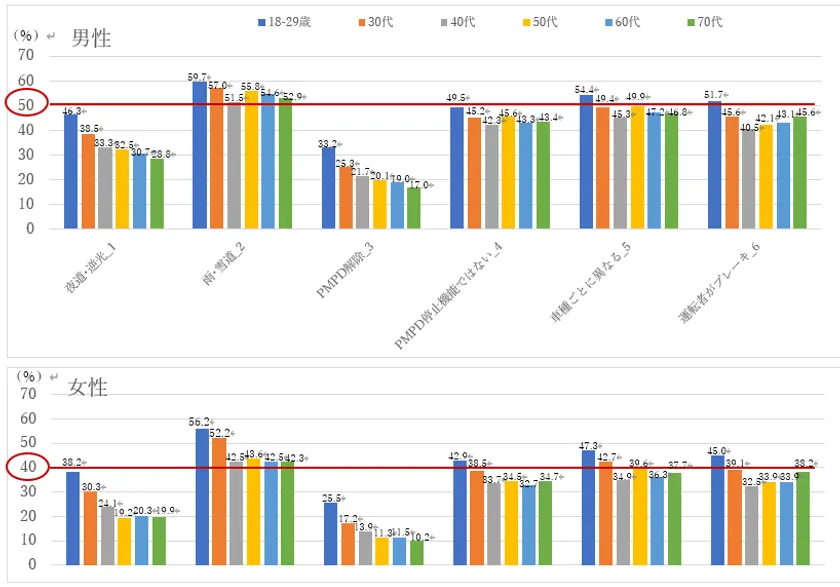
Chart 3
Question: How much do you know about All-speed ACC/Lane Keeping Assist?
1_Setting the speed for All-speed ACC is the driver's responsibility
2. All-speed ACC is supposed to be used on highways and freeways.
3. All-speed ACC may not respond to emergency braking by the car ahead.
4. All-speed ACC may not respond to sharp curves.
5. Lane Keep Assist may not work if the white line (yellow line) is blurred.
6. Lane Keep Assist may not work when the brightness changes suddenly, such as at the entrance or exit of a tunnel.
7. Neither of these functions is "automatic driving," and the driver is responsible for driving, so do not look away.
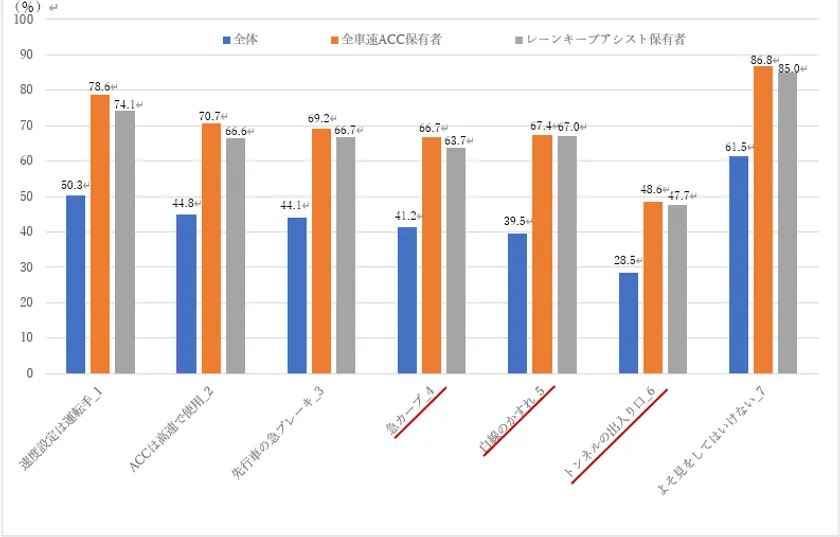
Chart 4
For the full report, please refer to the release on our website (Japanese only).
- Category:
- Research & Reports
